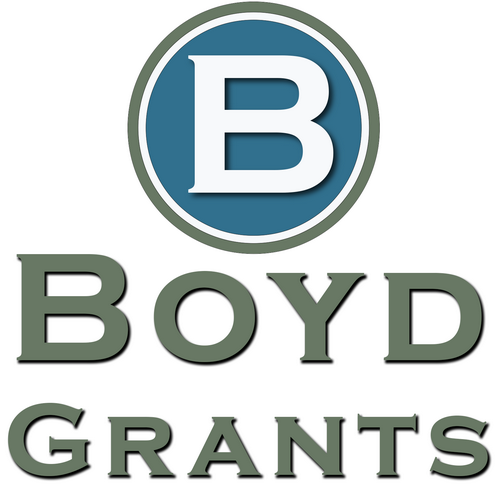Writing Tips and Best Practices for the Key Personnel Section in a Government Grant
The Key Personnel Section is one of the most scrutinized parts of a government grant proposal. To maximize its effectiveness, it must be well-written, clear, and strategically aligned with the project’s goals. Here’s a detailed guide to writing this section effectively.
1. Clarity and Specificity
Grant reviewers must quickly understand the qualifications and roles of each team member. Ambiguity or generalizations can weaken the proposal.
- Clearly Define Roles and Responsibilities:
- Detail what each team member will contribute to the project.
- Avoid generic phrases like “will assist with tasks” and replace them with specifics, such as “will design and implement the community engagement strategy.”
- Provide Specific Qualifications:
- Include relevant degrees, certifications, and experience.
- Highlight accomplishments that directly relate to the project goals.
- Example: Instead of saying “Dr. Smith is an experienced researcher,” write, “Dr. Smith, with 15 years of experience in climate resilience research, has published 20 peer-reviewed articles on urban heat mitigation.”
- Use Concise Language:
- Avoid lengthy descriptions that may confuse reviewers.
- Focus on key facts and accomplishments.
2. Alignment with Project Goals
Each team member’s expertise must directly connect to the objectives of the grant proposal.
- Link Expertise to Objectives:
- Show how each team member’s skills and experience will help achieve specific project milestones.
- Example: “The Project Director’s expertise in renewable energy policy ensures successful navigation of regulatory approvals, a critical project milestone.”
- Demonstrate Team Synergy:
- Explain how the team members’ combined skills form a cohesive and comprehensive approach to the project.
- Example: “Together, the Principal Investigator and Co-Investigator will integrate technical engineering solutions with community outreach initiatives to achieve project goals.”
3. Highlight Collective Contributions
Illustrating the team’s ability to collaborate and solve problems together can make the section more compelling.
- Showcase Complementary Skills:
- Highlight how the strengths of one member complement those of others.
- Example: “The Project Manager’s logistical expertise, combined with the Principal Investigator’s leadership, ensures timely delivery of project deliverables.”
- Address Potential Gaps:
- If the project requires skills beyond the core team, include consultants or advisors with specialized expertise.
- Example: “The inclusion of an external evaluator ensures impartial assessment of project outcomes.”
4. Use Compelling Examples and Achievements
Concrete examples of past successes can build credibility and inspire confidence in the team’s capabilities.
- Include Metrics When Possible:
- Quantify team members’ achievements to add weight to their qualifications.
- Example: “Under Dr. Lee’s leadership, the team secured $2.5 million in federal funding for a similar initiative, benefiting over 15,000 residents.”
- Cite Relevant Projects:
- Reference prior work that aligns with the proposed project.
- Example: “The team’s prior collaboration on a state-funded housing initiative resulted in a 20% reduction in homelessness in the target region.”
5. Prioritize Professionalism in Writing Style
The tone and style of this section should reflect professionalism and competence.
- Use Formal Language:
- Avoid overly casual or colloquial phrases.
- Use professional titles and affiliations to convey authority.
- Avoid Exaggeration or Unsupported Claims:
- Stick to verifiable facts and achievements.
- Example: Instead of “John is the best in the field,” write, “John has been recognized with the National Excellence in Engineering Award for his innovative designs.”
- Maintain Consistency in Format:
- Use the same format for all team members (e.g., name, title, qualifications, role in the project).
6. Include Writing and Review Steps
A polished Key Personnel Section reflects careful planning and attention to detail.
- Collaborate on Drafts:
- Engage team members to provide input on their roles and qualifications.
- Ensure their descriptions accurately reflect their contributions.
- Edit for Accuracy and Consistency:
- Double-check credentials, titles, and affiliations for correctness.
- Use consistent formatting for degrees, certifications, and titles (e.g., Ph.D., M.S.).
- Seek External Review:
- Have an experienced grant writer or colleague review the section for clarity and alignment with the rest of the proposal.
7. Avoid Common Pitfalls
- Don’t Overwhelm with Irrelevant Details:
- Focus on qualifications and experience relevant to the project.
- Avoid listing unrelated accomplishments.
- Don’t Overlook Gaps in Expertise:
- If a required skill set isn’t covered by the team, address this by including consultants or advisors.
- Don’t Use Vague or Generic Descriptions:
- Avoid phrases like “highly skilled” without evidence to back up the claim.
Example Section
Project Director:
Dr. Susan Martinez, Ph.D. in Environmental Science
Dr. Martinez has led 15 federally funded projects on climate adaptation, including the award-winning “Green Cities Initiative.” She will oversee all aspects of project implementation, ensuring alignment with regulatory standards and grant requirements.
Co-Investigator:
James Taylor, M.S. in Urban Planning
James has 10 years of experience designing community resilience plans. He will lead stakeholder engagement activities and integrate community input into project deliverables.
By following these tips, the Key Personnel Section becomes a powerful tool to convey the team’s capability, instill confidence in grant reviewers, and strengthen the overall proposal.


Recent Comments